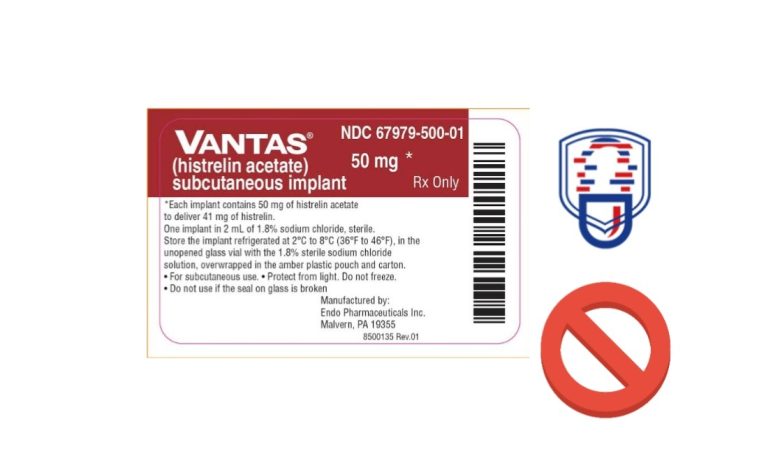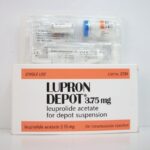Why Was Vantas Discontinued?

Vantas is a prescription medication used to treat advanced prostate cancer. It is a type of hormone therapy known as a gonadotropin-releasing hormone (GnRH) agonist that works by reducing the levels of testosterone in the body, which can help slow the growth and spread of prostate cancer.
Vantas is administered as an implant that is inserted under the skin of the upper arm by a healthcare provider. The implant slowly releases the medication over a period of one year, after which it must be replaced with a new implant.
The active ingredient in Vantas is histrelin acetate, which is a synthetic form of the naturally occurring hormone GnRH. Vantas is typically used in people with advanced prostate cancer that has spread beyond the prostate gland and is no longer responding to other treatments. It is not intended for use in women or children.
Vantas (histrelin acetate) was developed by Endo Pharmaceuticals and was approved by the U.S. Food and Drug Administration (FDA) in 2004. Since its approval, Vantas has been used to treat thousands of men with advanced prostate cancer, and it has been found to be effective in reducing testosterone levels and slowing the progression of the disease. It is typically used as a second-line treatment option for men with advanced prostate cancer that has spread beyond the prostate gland and is no longer responding to other treatments, such as surgery, radiation therapy, or chemotherapy.
Why Was Vantas Discontinued?
Vantas was discontinued by Endo Pharmaceuticals Inc. in September 2021 due to manufacturing problems. According to Endo Pharmaceuticals batches of Vantas were not coming out of production in a manner that makes the product safe to use, as a result, the company made a decision not to release it to the public.
The product was eventually discontinued. The good news is that there are several other medications in the same class that can be used as substitutes for Vantas, including:
1. Lupron (leuprolide acetate): Lupron is a GnRH agonist that is available in several different formulations, including injections, implants, and a nasal spray. Like Vantas, it works by reducing the production of testosterone to slow the growth and spread of prostate cancer. Lupron is typically administered every one to six months, depending on the specific formulation used.
2. Zoladex (goserelin acetate): Zoladex is another GnRH agonist that is available as a subcutaneous implant. It works by suppressing testosterone levels to slow the progression of prostate cancer. The implant is typically replaced every one to three months, depending on the individual’s treatment plan.
3. Trelstar (triptorelin): Trelstar is a GnRH agonist that is available in both monthly and three-month formulations. It works by suppressing testosterone production to slow the growth and spread of prostate cancer. It is typically administered as an injection into the muscle.
4. Eligard (leuprolide acetate): Eligard is a GnRH agonist that is available in several different formulations, including a monthly injection and a three-month subcutaneous implant. It works by reducing testosterone levels to slow the progression of prostate cancer.
5. Supprelin (histrelin acetate): Supprelin is another GnRH agonist that is similar to Vantas. It is a subcutaneous implant that slowly releases histrelin acetate over a period of one year to suppress testosterone levels and slow the growth and spread of prostate cancer.
6. Firmagon (degarelix): Firmagon is a GnRH antagonist, which means it works differently from GnRH agonists like Vantas. It rapidly reduces testosterone levels by blocking the action of GnRH in the body. Firmagon is typically administered as a monthly injection.
7. Viadur (leuprolide acetate): Viadur is a subcutaneous implant that slowly releases leuprolide acetate over a period of one year to suppress testosterone levels and slow the growth and spread of prostate cancer.
8. Decapeptyl (triptorelin): Decapeptyl is a GnRH agonist that is similar to Trelstar. It is typically administered as an injection into the muscle to suppress testosterone levels and slow the progression of prostate cancer.
9. Pamorelin (triptorelin): Pamorelin is another GnRH agonist that is similar to Trelstar and Decapeptyl. It is typically administered as a monthly injection to reduce testosterone levels and slow the growth and spread of prostate cancer.
10. Plenaxis (abarelix): Plenaxis is a GnRH antagonist that works similarly to Firmagon by rapidly reducing testosterone levels. It is typically administered as a monthly injection to slow the progression of advanced prostate cancer.
Each of these medications works in a similar way to Vantas to reduce the production of testosterone and slow the growth and spread of prostate cancer. However, they may differ in terms of their dosing, frequency of administration, and side effect profiles. It is important to talk to a healthcare provider to determine the most appropriate treatment option based on individual needs and medical history.





